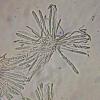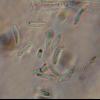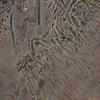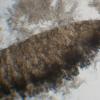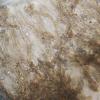
07-12-2025 16:07
Arnold BüschlenHallo, ich habe in einer Moos-Aufsammlung (epiphy

08-12-2025 21:04
Mark Stevens"Hello everyone,I'm relatively new to microscopy (

09-12-2025 12:06
 Andgelo Mombert
Andgelo Mombert
Bonjour,Je recherche l'article concernant Hypobryo

08-12-2025 18:59
 Lothar Krieglsteiner
Lothar Krieglsteiner
.. found by a seminar-participant, I do not know t

08-12-2025 17:37
 Lothar Krieglsteiner
Lothar Krieglsteiner
20.6.25, on branch of Abies infected and thickened

16-03-2014 22:00
Hello,I found this species a few months ago but ha

08-12-2025 13:39
Thomas Læssøehttps://svampe.databasen.org/observations/10572899

Hello, dear friends!
These 2 specimens some time ago i identidied as C. cyathoidea. Now I see some differences in spore morphology, and I wonder whether one of them could be C. pallida.
The 1st was examined in fresh condition, the 2d in exciccated state.
So, the 1st specimen was collected in oak forest, on Urtica dioica rotten stem.
Spores 7,3-12,6*2,2-3,6 um, with 1-3 small oil drops on each end.
Asci IKI B, with croziers, 49-68*3,6-5,5 um
Cheers,
Irina

in order to confuse you a bit :-)
C. pallida is a species with marginal teeth, at least as I understand it. It was treated by Breitenbach & Kränzlin under the wrong name C. dolosella. The marginal teeth are not shown on their photo, but they are mentioned, and I reexamined their material:
your whitish specimen could well be C. cyathoidea, quite a variable species. Are the spores actually up to 3.6µm? Regrettably, only the spores are alive in your preparations. Maybe you press too strong. The apical ring photo seems to exclude hymenoscyphus repandus.
The brown one reminds me of C. cacaliae.
Zotto

Hello, Zotto!
And thank you for answer.
Yes, I know about marginal teeth in C. pallida, but in my opinion they probably could be poorly visible/destructed, so on. The 2d one was collected in dry condition, so I cannot say surely whether it was brown in living state or not.
With best regards,
Irina




